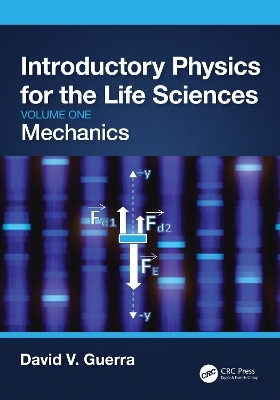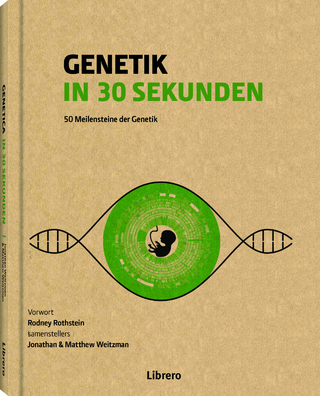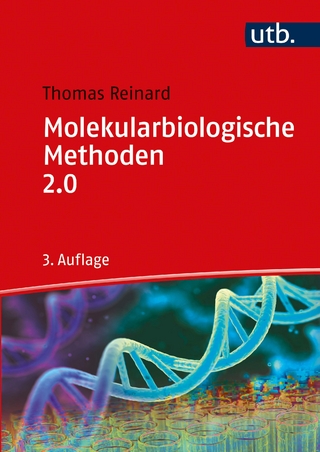
Introductory Physics for the Life Sciences: Mechanics (Volume One)
CRC Press (Verlag)
978-1-032-31106-7 (ISBN)
The order of topics studied are such that most of the problems in the text can be solved with the methods of Statics or Dynamics. That is, they require a free body diagram, the application of Newton’s Laws, and any necessary kinematics. Constructing the text with a standardized problem-solving methodology, simplifies this aspect of the course and allows students to focus on the application of physics to the study of biological systems. Along the way, students apply these techniques to find the tension in a tendon, the sedimentation rate of red blood cells in haemoglobin, the torques and forces on a bacterium employing a flagellum to propel itself through a viscous fluid, and the terminal velocity of a protein moving in a Gel Electrophoresis device.
This is part one of a two-volume set; volume 2 introduces students to the conserved-quantities and applies these problem-solving techniques to topics in Thermodynamics, Electrical Circuits, Optics, and Atomic and Nuclear Physics always with continued focus on biological applications.
Key Features:
Organised and centred around analysis techniques, not traditional Mechanics and E&M.
Presents a unified approach, in a different order, meaning that the same laboratories, equipment, and demonstrations can be used when teaching the course.
Demonstrates to students that the analysis and concepts they are learning are critical to the understanding of biological systems.
David V. Guerra, Ph.D. is a Professor of Physics at Saint Anselm College (SAC), United States of America. During his time at SAC, he has taught many of the courses offered by the department, including the physics course for biology majors and has developed and taught courses in Laser Physics and Remote Sensing. At SAC, he has conducted Remote Sensing research both in instrument development and data analysis. Professor Guerra designed, built, and operated a novel lidar (laser radar) that utilized a holographic optical element (hoe) as its primary optics. This work was done in coordination with NASA-GSFC and resulted in a series of publications and the successful development of a lidar system that was flown by NASA using the (hoe) technology. Professor Guerra has also conducted research in the analysis of remote sensing data in the investigation of natural systems. As part of a National Science Foundation grant, Professor Guerra conducted research with student researchers and faculty from other universities from across New Hampshire to study natural systems throughout their state. He continues his collaborative remote sensing work investigating relationships between environmental conditions and other natural systems. Professor Guerra has also done work in Physics education research ranging from the development of new laboratory experiences to new pedagogies and even contributing chapters to a high school physics textbook.
Chapter 1: Introduction. Chapter 2: Forces and Static Equilibrium. Chapter 3: Torque and Rotational Equilibrium. Chapter 4: Gravity and the Forces of Nature. Chapter 5: Electric Forces and Fields. Chapter 6: Magnetic Forces. Chapter 7: Kinematics. Chapter 8: Dynamics 1. Chapter 9: Dynamics 2. Chapter 10: Static Fluids. Chapter 11: Fluid Dynamics. Chapter 12: Circular Motion and Centripetal Force. Chapter 13: Rotational Motion. Chapter 14: Simple Harmonic Motion. Chapter 15: Waves.
| Erscheinungsdatum | 10.05.2023 |
|---|---|
| Zusatzinfo | 11 Tables, black and white; 243 Line drawings, black and white; 3 Halftones, black and white; 246 Illustrations, black and white |
| Verlagsort | London |
| Sprache | englisch |
| Maße | 178 x 254 mm |
| Gewicht | 500 g |
| Themenwelt | Naturwissenschaften ► Biologie ► Genetik / Molekularbiologie |
| Naturwissenschaften ► Chemie ► Physikalische Chemie | |
| ISBN-10 | 1-032-31106-1 / 1032311061 |
| ISBN-13 | 978-1-032-31106-7 / 9781032311067 |
| Zustand | Neuware |
| Informationen gemäß Produktsicherheitsverordnung (GPSR) | |
| Haben Sie eine Frage zum Produkt? |
aus dem Bereich


